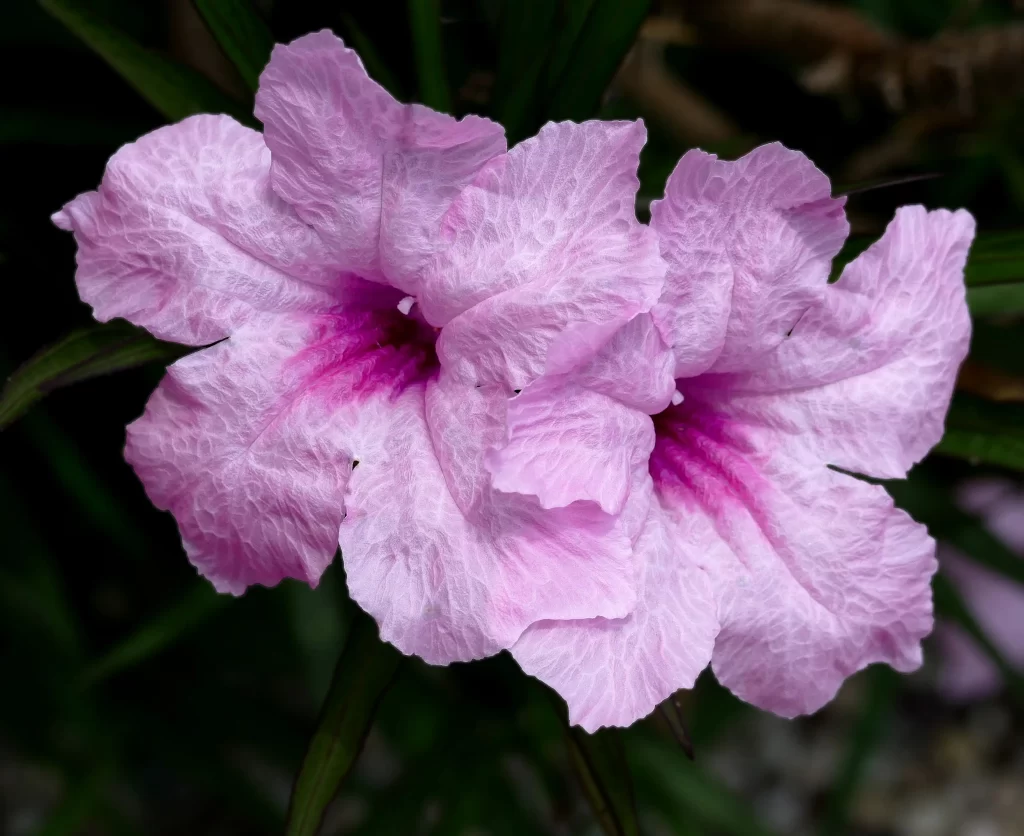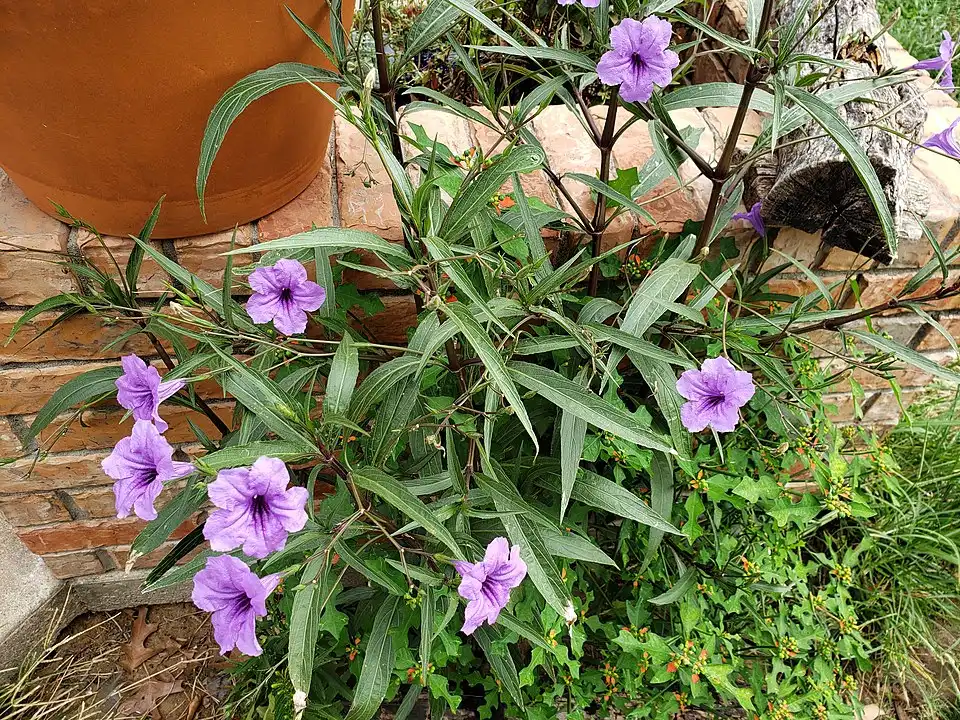Ruellia Brittoniana, commonly known as Mexican petunia or Britton’s wild petunia, is a beautiful and easy-to-grow perennial plant that belongs to the Acanthaceae family. It is native to Mexico, but it is widely cultivated in tropical and subtropical regions across the world, including the southern United States, the Caribbean, and South America. This article aims to provide an overview of Ruellia Brittoniana’s growth habits and offer a guide for gardeners and landscapers on how to cultivate and care for this plant.

Description of Ruellia Brittoniana:
Mexican petunia is an evergreen shrub that can grow up to three feet tall and spread up to two feet wide. It has long, narrow, dark green leaves that are about 3 to 6 inches long and 1 inch wide. The flowers of Ruellia Brittoniana are trumpet-shaped and come in various colors, including purple, pink, white, and lavender. They bloom from spring to fall, and each flower lasts only for a day, but the plant produces new flowers daily.
Understanding the Growth Habits of Ruellia Brittoniana:
Mexican petunia is a hardy plant that thrives in warm, humid conditions. It can tolerate a wide range of soil types, including sandy, loamy, and clay soils, but it prefers well-draining soil. Mexican petunia is also drought-tolerant, and it can survive periods of low rainfall, but it needs regular watering to produce healthy growth and abundant flowers.
Ruellia Brittoniana is a fast-growing plant that can spread quickly through its roots and seeds. It is important to plant Mexican petunia in an area where it has enough space to spread and not overcrowd other plants. Gardeners and landscapers can also use containers or raised beds to limit the plant’s growth and prevent it from invading other areas.
Propagation and Planting:
Mexican petunia can be propagated by seeds or cuttings. Gardeners and landscapers can collect seeds from mature plants and sow them in spring or early summer. The seeds should be planted about ¼ inch deep in well-draining soil and kept moist until they germinate, which usually takes about 7 to 14 days. Gardeners can also take stem cuttings from mature plants and root them in soil or water.
Read: Banana water and peels for plants growth
When planting Mexican petunia, gardeners and landscapers should choose a sunny or partially shaded area with well-draining soil. The plant should be spaced about 12 to 18 inches apart to allow for proper growth and airflow. Water the plant regularly, especially during hot and dry weather, and fertilize it with a balanced fertilizer every 6 to 8 weeks.
Care and Maintenance:
Mexican petunia requires minimal care and maintenance once established. Gardeners and landscapers should prune the plant regularly to remove dead or damaged leaves and promote healthy growth. Pruning also helps to control the plant’s growth and prevent it from becoming invasive.
Mexican petunia can be susceptible to pest and disease problems, including whiteflies, spider mites, and fungal infections. Gardeners and landscapers can prevent these problems by maintaining good hygiene, avoiding overwatering, and using organic insecticides and fungicides as needed.

Ideal for Gardeners and Landscapers:
Ruellia Brittoniana is a beautiful and easy-to-grow perennial plant that is ideal for gardeners and landscapers who want to add color and texture to their landscapes. By understanding the plant’s growth habits and following the tips and guidelines in this article, gardeners and landscapers can cultivate and care for Mexican petunia successfully. Whether used as a border plant, ground cover, or container plant, the Mexican petunia is sure to add a vibrant touch to any garden or landscape. Its beautiful trumpet-shaped flowers and hardy growth habits make it an excellent choice for gardeners and landscapers looking for low-maintenance and easy-to-grow plants.
One of the advantages of Ruellia Brittoniana is its ability to attract pollinators such as bees and butterflies. This makes it an excellent addition to any garden or landscape that is designed to support pollinators and encourage biodiversity. Mexican petunia’s fast-growing and spreading nature also makes it an excellent ground cover, which helps to prevent soil erosion and weed growth.
However, it is important to note that Mexican petunia can be invasive in some regions, particularly in Florida, where it is considered a Category 1 invasive species. As a result, gardeners and landscapers in these regions should take extra precautions to limit the plant’s growth and prevent it from spreading beyond its intended boundaries.
Conclusion:
Ruellia Brittoniana is an excellent choice for gardeners and landscapers looking for a low-maintenance and easy-to-grow plant that adds color, texture, and biodiversity to their gardens and landscapes. By understanding its growth habits and following the tips and guidelines in this article, gardeners and landscapers can cultivate and care for Mexican petunia successfully while minimizing its potential invasiveness.



